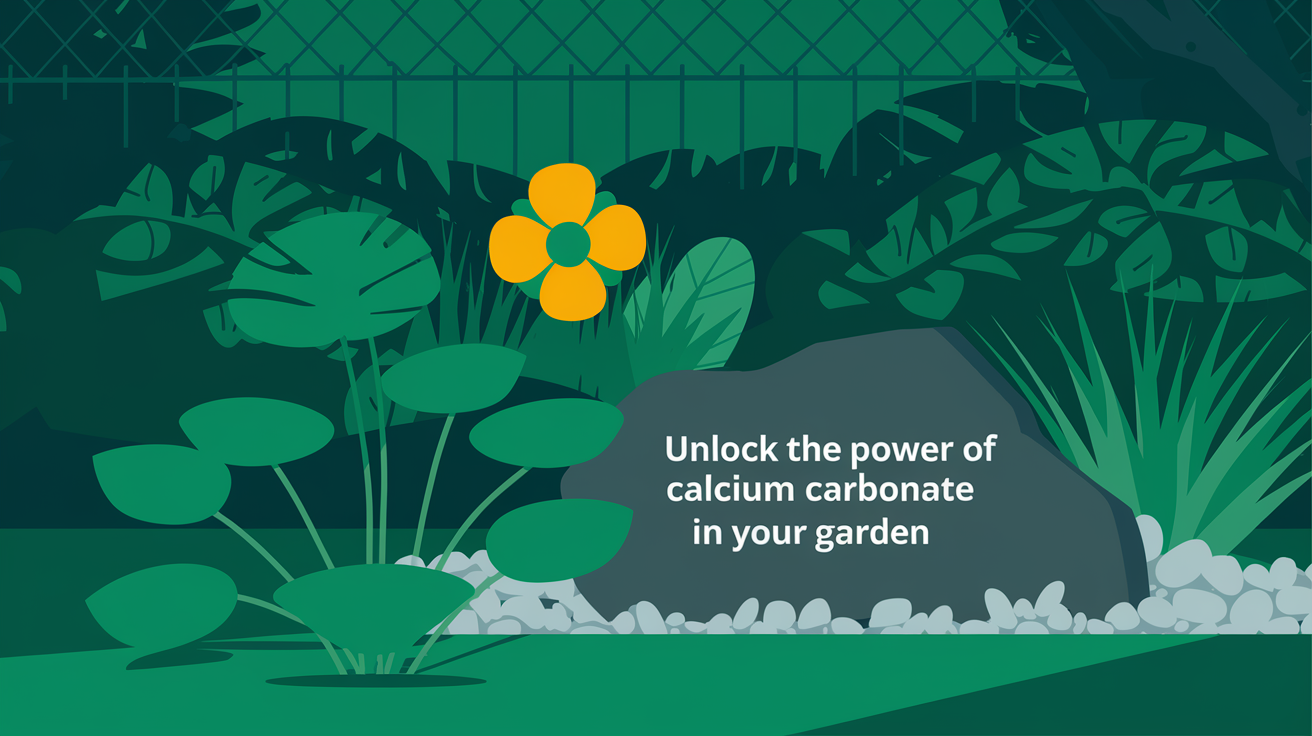Discover how calcium carbonate can transform your soil and boost plant growth.
Introduction
Every gardener dreams of a lush, thriving garden. But did you know that the secret to vibrant plant life often lies beneath the surface? The health of your soil is paramount, and calcium carbonate is a natural compound that can make a significant difference. In this guide, we’ll delve into what calcium carbonate is, its myriad benefits, and how you can effectively use it to enhance your garden.
What is Calcium Carbonate?
Calcium carbonate is a white, insoluble solid occurring naturally in minerals like limestone, chalk, and marble. It’s a staple in agriculture, known for its ability to improve soil quality and promote plant health.
How Does It Work as a Soil Amendment?
When introduced to the soil, calcium carbonate acts to neutralize acidity. This adjustment in pH levels creates a more hospitable environment for plants, allowing them to access essential nutrients that might otherwise be locked away. Learn more about soil amendments from Penn State Extension.
Different Forms of Calcium Carbonate
- Powdered Limestone: Finely ground for quick absorption, ideal for rapid pH correction.
- Chalk: Softer and more porous, suitable for gradual soil improvement.
- Pelletized Lime: Easier to handle and spread, with a slower release rate. For more details, visit Alabama Cooperative Extension System.
Benefits of Calcium Carbonate in Gardens
1. pH Adjustment
Acidic soils can inhibit plant growth by restricting nutrient availability. Calcium carbonate raises the soil pH towards neutral, unlocking vital nutrients like nitrogen, phosphorus, and potassium. Refer to the University of Minnesota Extension for an in-depth look at soil pH management.
2. Promotes Plant Growth
Calcium is essential for building strong cell walls in plants. Adequate calcium levels lead to sturdier plants with robust root systems, better able to withstand pests and diseases. Check out this article from Harvest to Table on the importance of calcium in gardening.
3. Improves Soil Structure
By enhancing moisture retention and aeration, calcium carbonate creates an optimal environment for roots. Improved soil structure means better water infiltration and reduced erosion. The Natural Resources Conservation Service provides resources on soil health and structure.
4. Fertilizer Benefits
As a source of calcium, it supplements your plants’ nutritional needs, particularly important for fruiting and flowering plants. It helps prevent common issues like blossom-end rot in tomatoes and peppers. For more information, visit Clemson Cooperative Extension.
When and How to Apply Calcium Carbonate in Gardens
When to Apply
Apply calcium carbonate in early spring or fall, allowing ample time for it to adjust the soil pH before the growing season. The Royal Horticultural Society offers guidance on the best times to amend your soil.
How to Apply
- Soil Testing: Start with a soil test to determine your garden’s current pH level. You can learn how to test your soil from the USDA.
- Calculate Amounts: Follow guidelines based on your soil type and test results. For example, sandy soils may need less, while clay soils might require more.
Application Methods
- Even Spreading: Use a garden spreader for uniform distribution.
- Incorporation: Mix the amendment into the topsoil using a tiller or garden fork to ensure effectiveness.
Potential Drawbacks of Using Calcium Carbonate
Overuse Can Lead to Alkaline Soil
Too much calcium carbonate can raise the soil pH too high, creating an environment where plants struggle to absorb nutrients. The University of Illinois Extension discusses the risks of over-liming your soil.
Doesn’t Work for All Plants
Acid-loving plants like blueberries, azaleas, and rhododendrons may suffer if the soil becomes too alkaline. For a list of plants that prefer acidic soil, visit The Old Farmer’s Almanac.
Other Alternatives to Calcium Carbonate
Dolomitic Lime
Contains magnesium in addition to calcium, beneficial for soils lacking in magnesium. Learn more from the University of Georgia Extension.
Gypsum
Provides calcium without altering soil pH, useful for improving soil structure and reducing compaction. The Colorado State University Extension offers insights on gypsum use in agriculture.
Wood Ash
A natural byproduct that’s rich in potassium and trace elements, can slightly raise soil pH. For guidelines on using wood ash, refer to Oregon State University Extension Service.
Conclusion
Harnessing the benefits of calcium carbonate can lead to a healthier, more productive garden. By carefully adjusting soil pH and enriching it with essential nutrients, you’re setting the stage for plants to thrive. Remember, the key is balance—always test your soil before making amendments. With the right approach, calcium carbonate can be the catalyst that turns your garden into a flourishing oasis.
Ready to elevate your gardening game? Start incorporating calcium carbonate into your soil routine and watch your garden flourish like never before!




Pingback: black prince tomato growing: A Step-by-Step Guide for Optimal Yield - Adam
Pingback: black prince tomato growing: Tips & Tricks
Pingback: Top 10 Purple Tomatoes Varieties: Vibrant and Unique